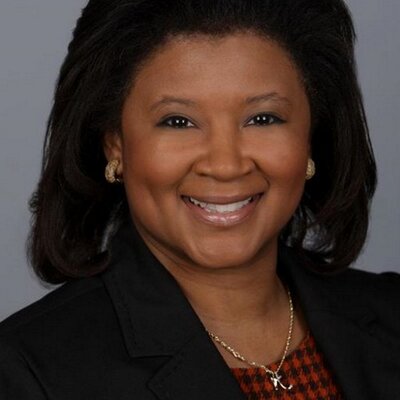
Business Resilience Programs: Q&A with Amazon’s Michele L. Turner
Michele L. Turner, Author and Head of Global Business Resiliency at Amazon, discusses methodologies that can help organizations create sustainable resilience programs and better respond to unexpected events.

Business resilience is not about bouncing back. It’s about bouncing forward.
This is exactly what Michele L. Turner, Author and Head of Global Business Resiliency at Amazon, realized and channeled into her book, Lessons Learned: Short Stories of Continuity and Resilience.
Michele recently joined us on The Employee Safety Podcast to share strategies from her book that can help business continuity practitioners build better resiliency programs for their companies and communicate more effectively with their stakeholders.
You can listen to the episode below.
Q&A With Michele Turner, Author and Head of Global Business Resiliency at Amazon
Your book is a collection of both personal and professional experiences. How do the two tie together to demonstrate your themes of continuity and resilience?
Both tie together in what I like to call work-life harmony. I thought, if I’m helping organizations address and mitigate risk, I should be able to do it for myself as well. So why not leverage the same type of methodology? There are areas in life where we have to prepare. You need to assess where you are and what the next steps will be when you’re faced with risks. Do you want to mitigate them? Do you want to accept them? When it comes to remediating, what strategies do you want to put in place? How do you want to manage this? Now that you have this knowledge, make sure the process you’re putting in place actually works and is sustainable. And finally, how do you make sure that you embed this into the culture of what you do or the culture of your organization? I always say that business continuity and resilience is not a project, it’s a program and a gift that keeps on giving.
Let’s talk about your current role for a moment. What processes do you and your team use to achieve business resilience, and did they provide any context for your book?
Number one—listen. Listen intently because, at times, when we’re subject matter experts, we just want to share all the information and data we have. However, we need to listen to exactly what the challenges are and identify the threats and vulnerabilities inherent within a team. Once we listen and understand the types of challenges that they have, then we streamline as per the culture of the organization or of the team. I can have wonderful suggestions on how we need to do A, B, and C, but if it doesn’t fit the company culture, then it’s not going to work.
“Business continuity and resilience is not a project, it's a program and a gift that keeps on giving.”MIchele L. Turner Author and Head of Global Business Resiliency at Amazon
Making sure that we have that top-of-the-house sponsorship is also important. Leadership needs to not only support but be actively engaged and talk about the benefits around these areas. We set a process to engage those teams and make sure that we are checking in, but we can’t do all the work for them. Organizations must drive resiliency, but we provide that consultative support to make sure that they have what they need to grow. Finally, exercising what we’ve learned is key. Does this process work? Is it functional? Do we have the right permissions? Do we have what we need to recover? Those are some high-level steps that we use to achieve business resilience.
In the book, you introduce the framework of The Three Cs: Clarity, Communication, and Cost. Can you explain that concept to us?
When we talk about preparing, we need to make sure that we have clarity as to why we’re doing this in the first place. Do we have an audit coming up? Have we had situations in the past that warranted something like this?
On the communication side, we need to make sure that we know who we need to communicate with and how. Focus on that communication, and make sure that there’s clarity because you might know the right people to communicate with, but if you don’t have clarity as to what you’re communicating, you’re losing credibility.
With cost, when we’re developing the program, we don’t know what we don’t know. But we do know that we’ll probably need to have some type of recovery area, whether we leverage another part of the campus or we need a different site altogether. We know we’ll need to document and report this information using some type of software, so that is another high-level cost to consider upfront. As you grow, you’ll be able to come back with more tangible pieces and tighter costs, but remembering these three Cs in preparation mode is going to be very helpful.
What other best practices or scenarios from your book could be beneficial for our listeners in the field?
Slow down to speed up. That’s an important personal and corporate lesson. There are times when we get so focused on wanting to do something that we just go right through without taking a step back to understand what the impact will be. It’s important to ask ourselves, why do I need to have these team members engaged? Have I gotten all of the necessary information for that process or that initiative?
Also, make sure that you are celebrating diversity within the organization. For example, I may have a laptop in front of me and wonder if I’ve backed up the information, but a security person may look at the laptop and ask if I have a BitLocker on it and if it’s secure. So we need to be able to come together and share information. I think of diversity as a mosaic. In a mosaic, you bring individual gifts to one particular picture and it creates a beautiful masterpiece. I can see everything individually, but it works as a whole.
As someone who has been in the industry for some time, can you share any lessons you’ve learned in the past year or so that have changed how you think about or approach business continuity and resiliency?
One of the things that I’ve seen is the opportunity to underscore the value-add of business continuity, resilience tactics, and crisis management efforts. I would challenge business continuity professionals to make sure that we’re continuously growing and learning how to communicate the knowledge that we have in a way that would be applicable for any area.
Sometimes we develop response plans on what we would need to do for 5, 10, 15-day increments, but we also need to make sure that we prepare for threats to stretch out for longer than 30 days or a year. What would we need to do to do then?
While we couldn’t predict the pandemic, there have been other pandemics that we’ve been through that we could use as jumping-off points. We don’t always have to start over. From a virtual employee perspective, what does that really mean for your organization? Do you have the right policies for remote workers? Are there certain things that we have to do in terms of additional cross-training? Does everyone have what they need to sustain the work that they do over a significant period of time? There’s so much that this past year has taught us so that we can be ready for the next event.
Resiliency is about making sure that we’re able to go forward. Some people talk about resiliency as bouncing back. I don’t want to bounce back. I don’t want to bounce back to where we were before. I want to bounce forward. I want to make sure that I have stepping stones in place that I can use to propel over the next situation if I can.
Is there one more piece of advice you can think of to help leaders achieve business resiliency?
Speak up. I say that is because, at times, you get into a room and you want to listen and marinate your ideas so that you can say something profound. By the time you go through that processing, however, someone else has said exactly what you want to say. So speak up. You are at the table because you are supposed to be there. If there’s anything that the past year has taught us, nothing is off the table. So just trust yourself. Make sure that you have the justification, but bring those ideas to bear and speak up.
Portions of this article have been edited for clarity and brevity.





